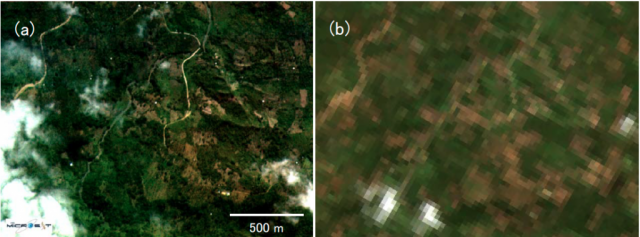Philippine microsatellite Diwata-1, recognized for providing ‘world’s best images’
Philippines’ first microsatellite Diwata-1 has received praises from researchers for its high-resolution images taken which are now perceived to be “world’s best images.”

DIWATA-1. This graphic compares two RGB images of Dumingag on the island of Mindanao, Philippines. Image (a) was taken by the HPT installed in DIWATA-1, while image (b) was taken by Landsat 8’s OLI. These results demonstrate that DIWATA-1 can observe the Earth at significantly higher resolutions than existing large satellites. (Photo and caption from Hokkaido University)
According to a report by Inquirer, the said images produced by Diwata-1’s High Precision Telescope (HPT) “outclassed an American Earth observation orbiter” in terms of capturing images of about 3 meters with ground resolution.
In a statement released by the Philippine Council for Industry, Energy, and Emerging Technology Research and Development (PCIEERD) of the Department of Science and Technology (DOST), these clear images can help the country. “With a clearer photo from Diwata 1’s HPT camera, it will be easier to see which areas are affected by natural and even man-made disasters such as floods and fires,” the statement said as reported by GMA News.
Diwata-1 is a joint project by Japan’s Hokkaido University, Tohoku University, Philippines’ Department of Science and Technology (DOST) and the University of the Philippines (UP). The said microsatellite was sent to the International Space Station on March 23 and stayed until April 27, when it was launched 400 kilometres above the Earth.
Source: GMA News, GMA News, Inquirer.net













